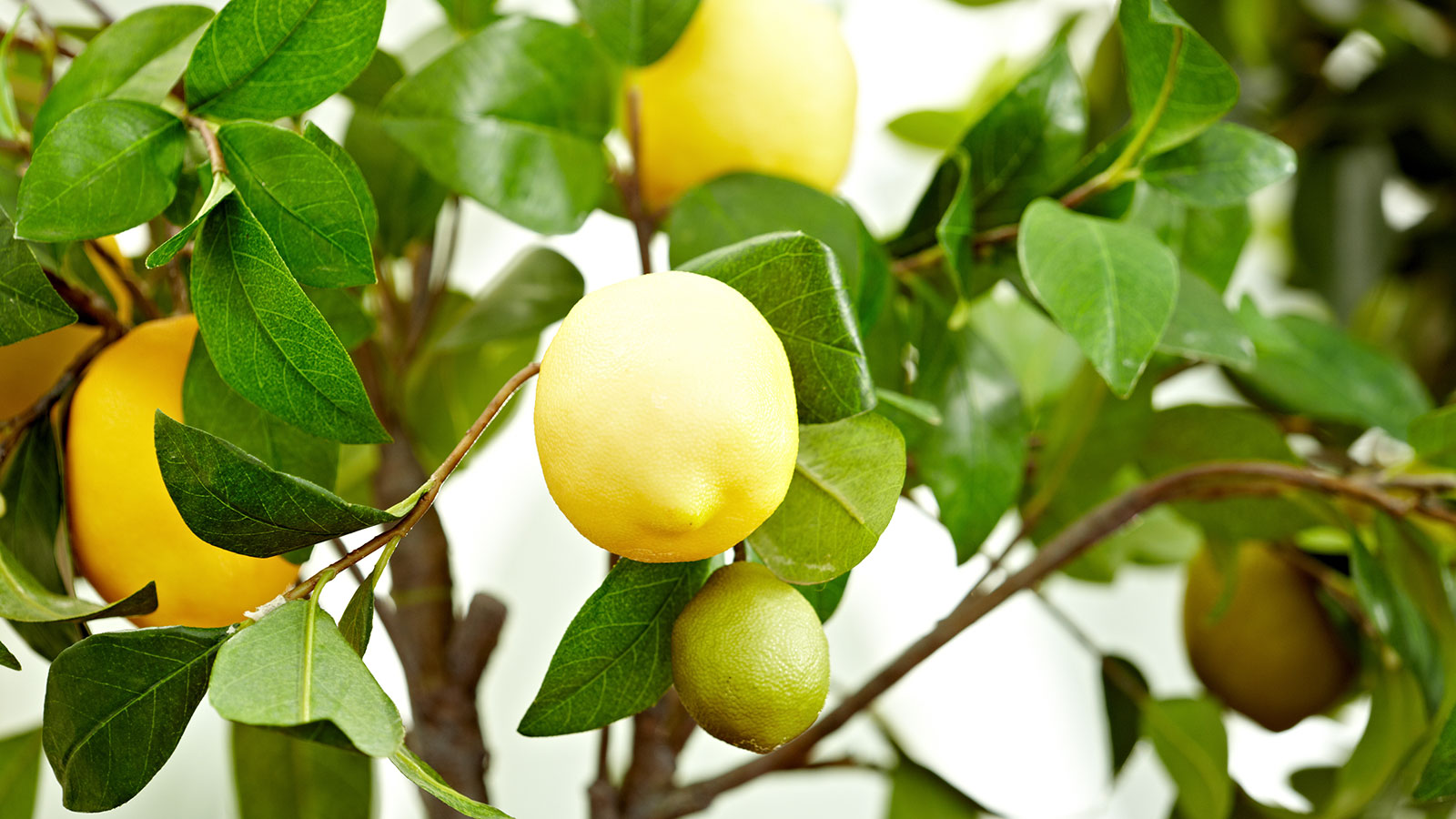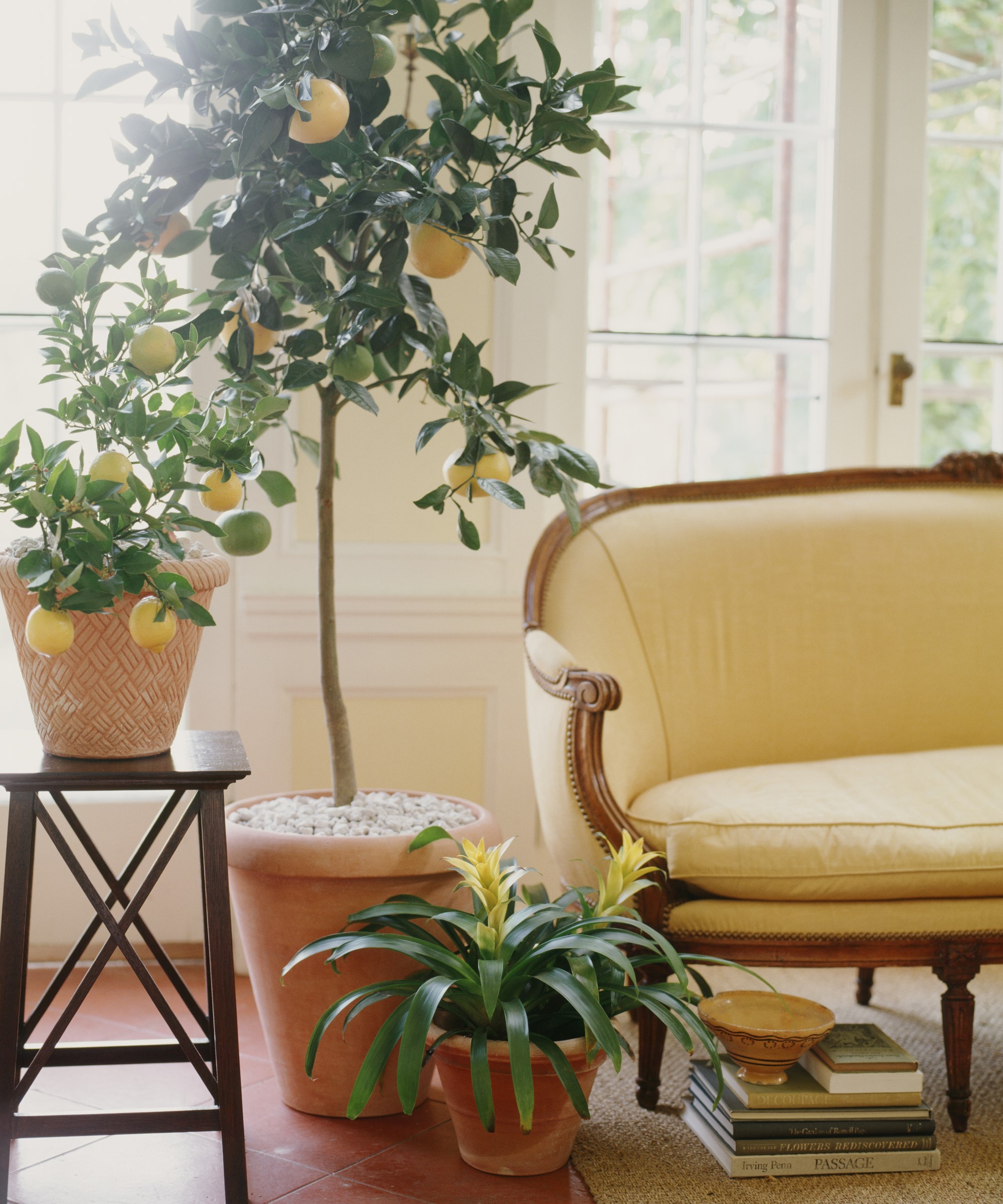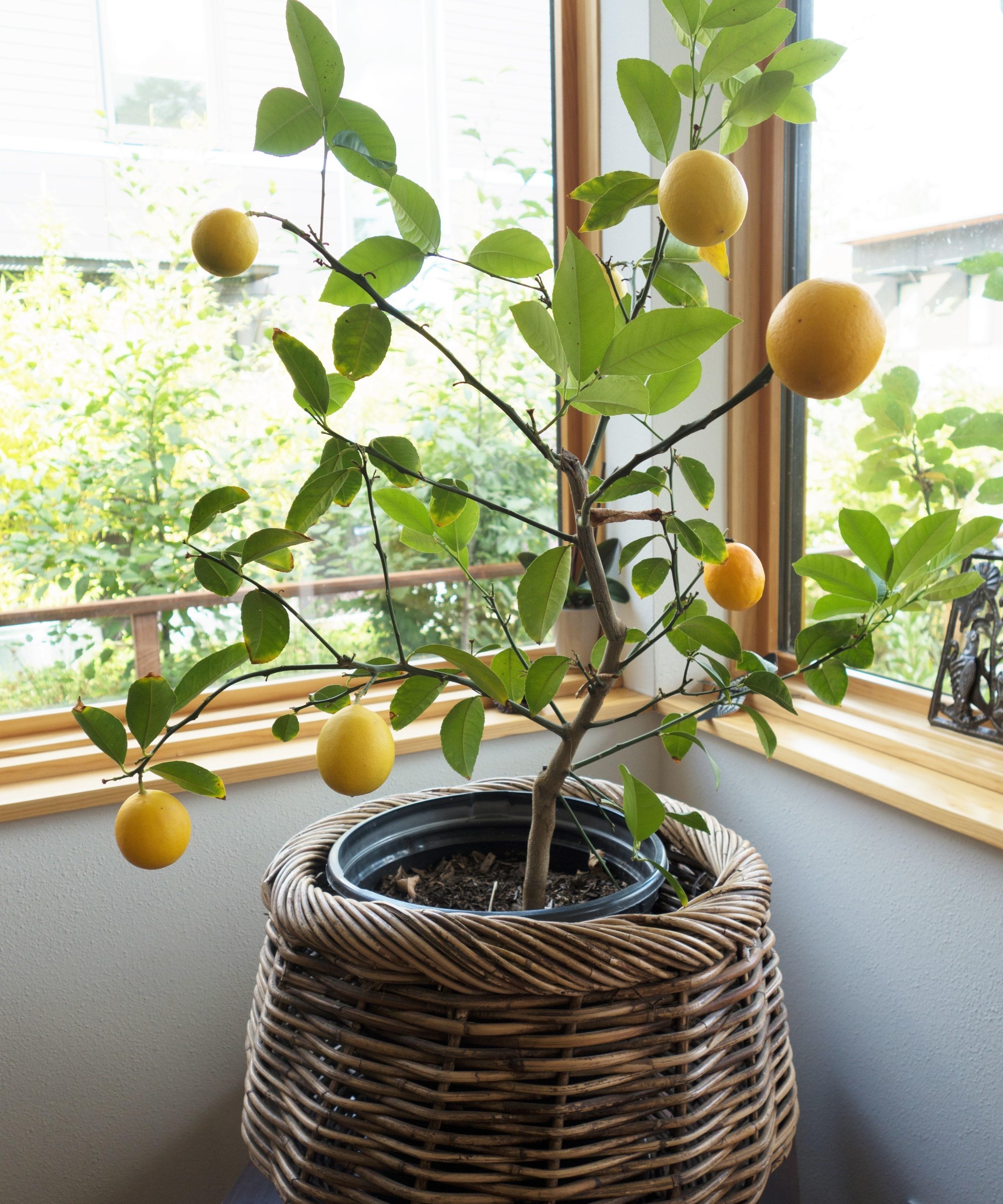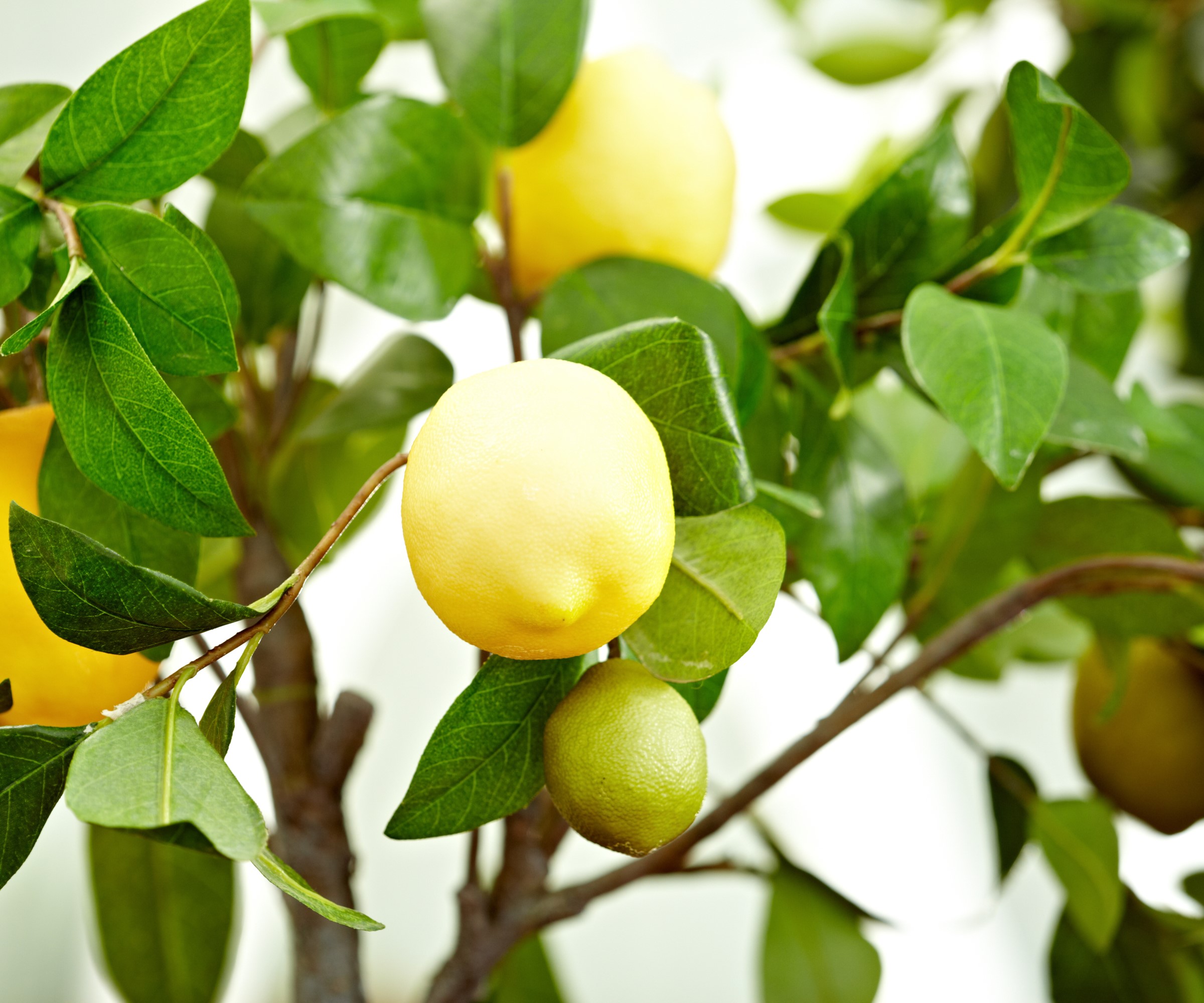How to grow a lemon tree indoors – expert tips for delicious homegrown fruit
Lemon trees need care and attention indoors, but you can succeed with growing them in the house


Lemon trees can be grown inside the house provided you can give them the right conditions to ensure their happiness. Usually seen outdoors or in a greenhouse or orangery, citrus trees can actually thrive indoors.
They have the ability to bring elegant fragrance to a space, thanks to their flowers and fruit, and, if you can give them the ideal conditions indoors, a tree is capable of producing fruit throughout the year.
The most important part of citrus tree care when growing them indoors is light. Place a lemon tree where you can provide it with the most natural light inside the home and it will repay you with beauty and tasty fruit.

Give lemon trees a light and warm spot in the household
Can you grow a lemon tree indoors?
Lemon trees are one of the best fruit trees to grow in pots and they can bring a touch of a Mediterranean garden into a home. If you are wondering how to grow a lemon tree indoors, then it pays to understand that light is key and giving the tree the light it craves will be the difference between success and failure.
Lemon trees want 10-12 hours of sunlight, which can be supplemented with artificial grow lights if required. This is likely necessary during the winter months. Not giving citrus trees the right amount of light they need is a common problem when growing citrus inside and artificial lights can go some way to solving this issue. An example of a full spectrum LED grow light that would benefit lemon trees is the LORDEM Grow Lights available at Amazon that has an extendable tripod stand.
Place the lemon tree in a light and sunny spot in the household – choose a spot that gets plenty of natural sunlight. The likes of a sun room or enclosed porch is ideal, while smaller lemon trees can succeed on bright window sills. Ensure to keep the plant away from air conditioning or sources of great heat, such as a heating duct, as extreme fluctuations in temperatures can damage the tree.
Tony O'Neill, an experienced gardener and author, recommends: ‘An ideal location for growing lemon trees indoors is near a south-facing window with ample sunlight. In addition, the temperature should be consistently between 55-85˚F to promote healthy growth.’
Design expertise in your inbox – from inspiring decorating ideas and beautiful celebrity homes to practical gardening advice and shopping round-ups.
Lemon trees can be toxic to cats and dogs, as they contain phototoxic compounds, so care should be taken to keep them out of the reach of household pets if you are growing them inside the home.

Tony O'Neill is a passionate gardener and the author of Composting Masterclass, available at Amazon, and Your First Vegetable Garden. He runs the website Simplify Gardening along with a successful YouTube channel to educate people on various gardening topics.

A south-facing window is an ideal spot indoors for a lemon tree
How to care for a lemon tree indoors
To grow a lemon tree indoors, use a large container of at least 12-15 inches in diameter and fill with a citrus-specific potting mix. Citrus trees want a well-draining mix with a slightly acidic soil pH of between 6-6.5. You can purchase specific potting mixes for citrus, or if you want to make your own opt for a combination of homemade compost mixed with the likes of vermiculite, peat moss or coco coir. There are ways to make soil more acidic, including using coffee grounds on plants or mulching the top of a pot with pine needles or oak leaves.
As light is so important to growing lemon trees indoors, it should be a priority to keep any windows clean to make sure the trees benefit from as much sunlight as possible. Graham Rice, gardening expert for Homes & Gardens, advises: ‘Warmer temperatures suit these plants well, so they’re happy in the house, and small plants can even go on the windowsill. But they like good light so make sure you clean the glass as the nights draw in.’
Watering plants in containers can be tricky to master, and the regime for lemon trees will alter from summer to winter. Check the soil a few inches down by using your fingers to gauge the moisture levels. The tree wants to dry out and then be watered thoroughly, being careful as they prefer it moist but not soggy. Remember to place a saucer under the pot to catch the excess water that drains out. Monitor the moisture levels regularly and don't be overzealous as overwatering can cause many issues, including being one reason why lemon tree leaves turn yellow.
Lemon trees in pots should be fed regularly with a dedicated citrus fertilizer, such as the Espoma Citrus Tone food available at Walmart, as the nutrients in the soil can be quickly used up in pots. The time to prune a lemon tree is in late winter or early spring when they are starting to grow and use this time to remove dead or damaged branches, shape the tree, and open up the canopy to improve access to light and air circulation.
If you want to take good care of your lemon tree, the Citrus Tree Care Kit from Fast Growing Trees comes with a fertilizer, trace element spray, and calcium nutrient spray that helps a lemon tree at all stages of their growth.

Graham has a wealth of knowledge in all things horticulture. He trained at the prestigious Royal Botanic Gardens in Kew, England, and since then has written more than 20 books on plants and gardening. He gardened in Pennsylvania for 20 years, but has recently returned to his native England.

Watering and feeding are integral to lemon trees producing healthy fruits
Choosing the right lemon tree to grow indoors
There are some versions of lemon trees that are more suited to being grown indoors. This includes the 'Improved Meyer' and 'Ponderosa’ types of lemon, which are two of the best indoor fruit trees. These varieties are more compact forms of lemon trees and have an improved tolerance for indoor growing.
An ‘Improved Meyer’ lemon tree is available from Fast Growing Trees and is ideal for being grown in containers as their growth can be happily contained in a pot. It is also more cold-tolerant than many other lemon tree varieties and will be happy with lower light levels. Similarly, a 'Ponderosa' lemon is also available at Fast Growing Trees and it is a dwarf lemon type suited for pots and indoor growing due to its increased hardiness. It is a hybrid type that produces very large and acidic fruit with thick skins.
You can grow a lemon tree from seed, however it represents a gamble as it can take five years to produce fruit and most seeds will not be true to the parent plant. Therefore, buying an established lemon tree is a much safer and guaranteed option.

Meyer lemon trees are compact forms and ideal for growing indoors
Lemon trees may be a luxury to have indoors, though if you can give it the light it thrives year-round then it is a valuable addition to any space. These indoor plants can look beautiful as ornamental trees, but with the added bonus of juicy fruits for use in cooking, baking, or for lemonade. A homegrown lemon freshly plucked off a tree inside the home and sliced into a drink of choice sounds idyllic to me.

Drew has worked as a writer since 2008 and was also a professional gardener for many years. As a trained horticulturist, he worked in prestigious historic gardens, including Hanbury Hall and the world-famous Hidcote Manor Garden. He also spent time as a specialist kitchen gardener at Soho Farmhouse and Netherby Hall, where he grew vegetables, fruit, herbs, and cut flowers for restaurants. Drew has written for numerous print and online publications and is an allotment holder and garden blogger. He is shortlisted for the Digital Gardening Writer of the Year at the 2025 Garden Media Guild Awards.